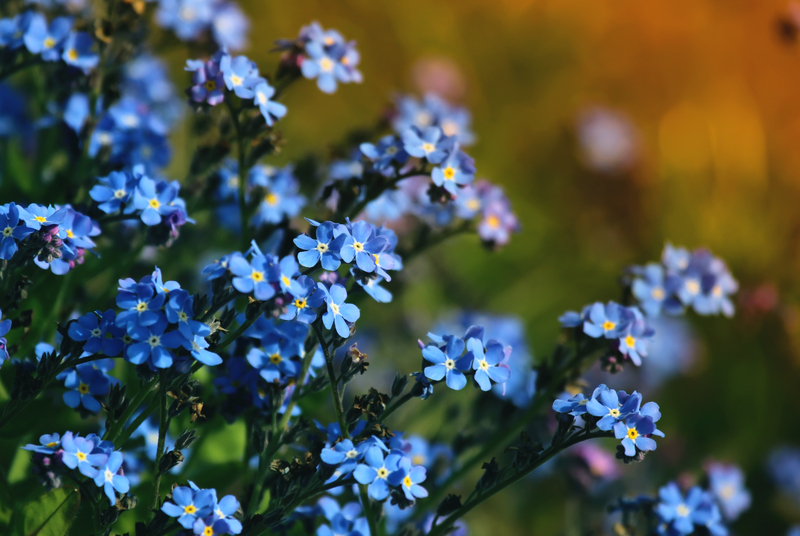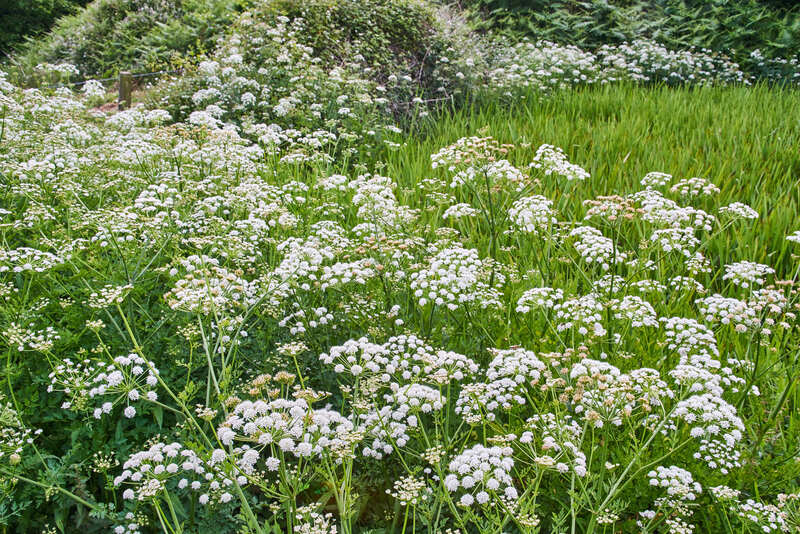Gardening Harmony with Furry Friends
Posted on 24/05/2025
Gardening Harmony with Furry Friends: Creating a Pet-Friendly Outdoor Oasis
Gardening is a beloved pastime for many individuals, offering both stress relief and an opportunity to enjoy the beauty of nature. If you're a pet owner, particularly of dogs or cats, you might find yourself wondering how to create a harmonious garden with furry friends around. Can you have lush greenery, colorful blooms, and a thriving vegetable patch while ensuring the safety and happiness of your pets? Absolutely--with planning and a thoughtful approach, gardening harmony with furry companions is not just possible but incredibly rewarding.
Understanding the Needs of Both Pets and Plants
To achieve true harmony between your garden and your pets, it's crucial to understand the instincts and needs of both parties. Pets like dogs may see your freshly tilled garden bed as the perfect digging spot, while cats may nibble on your plants or use your mulch as a litter box. On the other hand, many common garden plants can unintentionally pose risks to your four-legged friends.
This guide will help you create a pet-friendly garden where both flora and furry fauna can thrive side by side. Keep reading to explore practical tips on landscape design, pet-safe plants, training strategies, and more!

Designing a Pet-Friendly Garden Space
Consider Your Pet's Habits and Traits
The first step in achieving gardening harmony with your furry friends is taking a close look at their behaviors:
- Do they love to dig? Designate a dig-friendly area with sand or soft earth where this behavior is permitted.
- Are they sunbathers? Plan open, grassy spaces for lounging.
- Do they chase wildlife or insects? Consider placing taller plantings near perimeter fences to minimize visual stimulation.
- Are they prone to chewing? Choose non-toxic plants and use sturdy materials for garden structures.
Create Zoning and Boundaries
Strategically zone your garden for different activities to encourage both pet and plant harmony:
- Dedicated Pet Zones: Consider a section of your yard for play equipped with pet toys, water features, or agility equipment.
- Protected Plant Beds: Use low picket fencing, raised beds, or decorative edging to provide a clear boundary for pets. Cats, for example, tend not to jump over barriers taller than 16 inches.
- Pathways and Patios: Place durable paths where pets typically walk or run, preventing wear and tear on your plants.
- Shade and Shelter: Include shaded spots with trees, shrubs, or even pet-friendly gazebos so your animals can rest comfortably.
Use Durable, Safe Materials
The right materials boost gardening harmony with furry companions. Choose these elements for safety and resilience:
- Pet-Safe Mulches: Avoid cocoa mulch, which is toxic to dogs. Opt for shredded pine, cedar, or hemlock mulch instead.
- Non-Toxic Pesticides: Research organic pest control options, such as neem oil or diatomaceous earth.
- Sturdy Hardscaping: Install strong fences, gates, and stone barriers to deter digging and chewing.
Selecting Pet-Safe Plants for a Harmonious Garden
Avoiding Toxic Plants
Many garden favorites can actually be harmful to pets. Achieving garden harmony with pets means knowing and avoiding toxic flora. Some common offenders include:
- Oleander
- Azalea
- Lilies (especially dangerous for cats)
- Daffodils
- Sago Palm
- Foxglove
Always consult an up-to-date list from the ASPCA or your local veterinarian for a comprehensive view of plants toxic to pets. When in doubt, err on the side of caution.
Recommended Non-Toxic Plants
Enhance yard and pet harmony with these safe, beautiful choices:
- Sunflowers - Bright and cheerful, these are great for pollinators and safe for most pets.
- Snapdragons - These provide color and are non-toxic.
- Catnip and Cat Grass - Perfect for feline companions; cats love to nibble on these.
- Rosemary, Basil, and Thyme - Culinary herbs safe for dogs and cats.
- Marigolds - Help repel pests and are harmless if ingested in small amounts.
- Ferns (Boston, Maidenhair) - Lovely greenery that won't harm your furbabies.
- Bamboo - Safe for pets and creates a tropical vibe.
Water Features and Pet Safety
Water for Play and Hydration
Including water features can amplify the harmony between garden and pet:
- Pet-Safe Pond: If you install a pond, ensure pets can easily exit (gentle slopes) and avoid toxic water plants.
- Shallow Splash Pools: Especially refreshing for dogs on hot days. Use clean, chemical-free water.
- Automatic Water Fountains: Provide accessible, fresh drinking water for pets.
Avoiding Hazards
Never use chemicals like chlorine or algaecides in outdoor water accessible to pets. Secure all deep or large water features with fencing for the safety of smaller animals and children.
Dealing with Digging and Plant Damage
Channeling Natural Instincts
Dogs dig, cats scratch, and both may chew--rather than trying to eliminate these instincts, channel them thoughtfully to maintain pets and garden harmony.
- Training: Use positive reinforcement to direct behavior. Reward digging in designated areas, or leash-train during early garden explorations.
- Physical Barriers: Protect vulnerable beds with chicken wire, rocks, or short fencing.
- Repellents: Use safe, natural solutions (like citrus peels, vinegar sprays, or motion-activated sprinklers) to deter pets from restricted areas.
- Activity Diversion: Give pets plenty of toys, puzzles, and attention so they're less likely to act out in the garden.
Composting and Mulching with Pets in Mind
Safe Composting Practices
Composting is fantastic for eco-friendly gardening, but not all compost is pet-friendly. To maintain garden and pet harmony:
- Avoid adding coffee grounds, moldy food, or certain vegetable scraps (like onions and grapes) that can harm animals.
- Secure your compost bin with a lid or fencing to prevent curious pets from investigating.
Mulching Matters
Avoid cocoa hull mulch, which is extremely toxic to dogs. Stick with:
- Cedar
- Pine
- Hemp-based mulch
If your pet is a chewer, monitor them until you're certain they won't eat large amounts of mulch, no matter the type.
Organic Pest and Weed Management
Pet-Safe Alternatives
Many chemical pest and weed treatments are highly toxic to pets. For sustainable harmony in gardens with pets, try:
- Neem Oil or Insecticidal Soap: These natural sprays control pests with minimal risk to animals.
- Diatomaceous Earth: Food-grade only--dust lightly to deter crawling insects.
- Physical Controls: Hand-pulling weeds, row covers, or copper tape around plant bases.
Beneficial Insects and Companion Planting
Promote a balanced ecosystem with ladybugs, praying mantises, and bees. Interplant basil, marigold, and nasturtium to repel pests naturally.
Pet Training for Garden Success
Set Expectations Early
One of the secrets to long-term gardening harmony with your furry friends is time and patience:
- Consistent Commands: Decide on boundary "rules" (e.g., no flower beds). Reinforce with treats.
- Supervised Garden Time: Acclimate pets to your garden gradually, extending alone time as they learn.
- Interactive Play: Join pets outdoors for regular activity, burning off energy that might otherwise damage your plants.
Address Unwanted Behaviors Compassionately
Never punish pets physically for curiosity or natural instincts. Redirect and reward desired behaviors instead.
Providing Enrichment for Furry Garden Companions
Pet-Friendly Features
A harmonious garden is stimulating for pets, too! Consider these additions:
- Pet Tunnels or Mazes: Hide treats and toys for scavenger hunts.
- Safe Chew Sticks: Opt for sticks or roots safe for tooth health.
- Hidden Treat Stations: Scatter healthy treats for dogs and cats to discover during playtime.
- Climbing Towers and Perches: Especially for cats, low towers offer exploration and sunbathing spots.
Gardening Harmony with Multiple Pet Species
If you have more than one kind of pet--say, a dog and chickens, or rabbits and cats--designing a multi-pet-friendly garden requires extra thought:
- Species-Specific Zones: Chickens need protected runs, rabbits need digging boxes, and cats may want high perches.
- Secure Fences: Different species have unique escape tactics--ensure your fencing is up to the task!
- Group Supervision: Monitor first interactions between pets in the garden to prevent territorial disputes or bullying behaviors.
Benefits of Gardening with Your Pets
Bonding, Joy, and Wellbeing
The pleasures of gardening harmony with furry friends extend far beyond aesthetics. Enjoy the benefits of:
- Physical Exercise: Gardening and playing keeps both you and your pets fit.
- Mental Stimulation: Exploring new sights, smells, and textures enriches your pets' lives.
- Emotional Bonding: Sharing outdoor time strengthens your companionship.
- Teaching Responsibility: Gardening with children and pets helps instill respect for nature and living things.

Seasonal Tips for Pet-Safe Gardening
Spring & Summer:
- Check for emerging poisonous weeds or bulbs.
- Keep pets cool with ample shade and fresh water.
Fall & Winter:
- Clean up fallen fruit or nuts that might ferment or mold.
- Use pet-safe ice melts on paths and avoid antifreeze leaks.
Conclusion: Achieving Lasting Gardening Harmony with Furry Friends
Gardening alongside your pets isn't just possible--it's immensely fulfilling! By choosing dog-and-cat-friendly plants, creating dedicated pet zones, maintaining secure boundaries, and training patiently, you can achieve enduring harmony between your vibrant garden and the animals you love. Give your furry family members a safe, fun environment and nurture your garden into a living, breathing sanctuary for all.
Enjoy the unique delight of seeing your pets relax and thrive among flowers, herbs, and trees--proof that with care and design, gardening harmony with furry friends is within everyone's reach.

